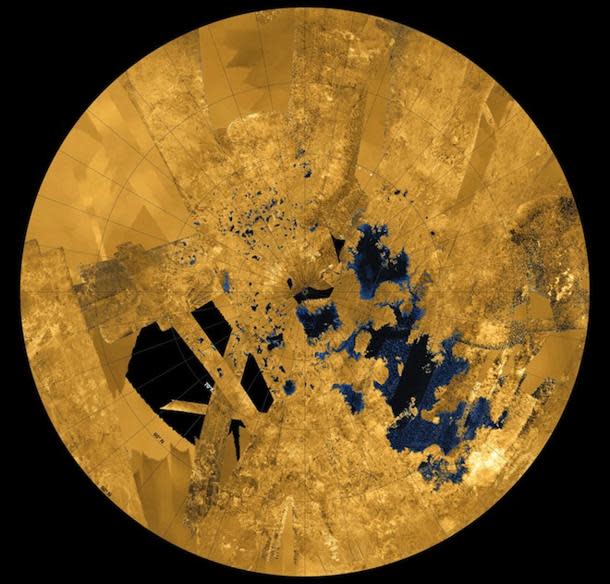 Science and Weather
Science and WeatherCassini maps Saturn’s moon Titan in incredible detail
The Cassini spacecraft, which has been orbiting around Saturn for the past four years, has been returning some amazing pictures and data from the planet's clouds, rings and moons. Some of the latest images returned by the probe have included some incredibly detailed maps of Saturn's largest moon, Titan.
The full mosaic image map of the moon's northern hemisphere can be found on the NASA Jet Propulsion Laboratory website (click here), but the best way to see it is closer up. To give us that experience, JPL staff pieced together a three-dimensional, computerized landscape from Cassini's data, that shows us what it would be like to fly over Titan's lakes, hills and mountains.
Since Titan's surface is often lost to our view in visible light, due to its thick hydrocarbon atmosphere, this map was generated using high-resolution sweeps of Cassini's RADAR camera, which takes pictures of the surface by bouncing microwaves off of it.
The dark areas of terrain in the video are what you could call the 'Great Lakes' of Titan. Remarkably, this region — measuring roughly 1,800 kilometres long by 900 kilometres wide — contains around 97 per cent of the lakes on the moon's surface. The volume of hydrocarbons in these lakes, along with all the other lakes and rivers on the moon, has been measured to be around 40 times the known oil reserves on Earth.
[ More Geekquinox: Possible water geyser spotted erupting from Jupiter’s moon ]
Although the moons of the various planets in our solar system are all fairly unique, Titan has the distinction of being the only other body in our solar system, besides Earth, that has persistent, free-flowing liquid on its surface. On Earth, it's water, of course. On Titan it's liquid methane and ethane. That's certainly not 'Earth-like' in a way where we could set down on Titan in a spaceship and just step out onto the surface in just our street clothes. However, the moon's rivers and lakes do give it a certain 'Earth-like' quality, at least when compared to the rest of the solar system.
"Learning about surface features like lakes and seas helps us to understand how Titan's liquids, solids and gases interact to make it so Earth-like," said Steve Wall, acting team lead for Cassini's RADAR camera at JPL, according to a NASA statement. "While these two worlds aren't exactly the same, it shows us more and more Earth-like processes as we get new views."
What's up next for Cassini? Since summer is approaching for Titan's northern hemisphere, according to NASA, that is "potentially the most exciting time for weather at Titan's northern hemisphere."
(Image and video courtesy: NASA/JPL-Caltech/ASI/USGS)
Geek out with the latest in science and weather.
Follow @ygeekquinox on Twitter!



